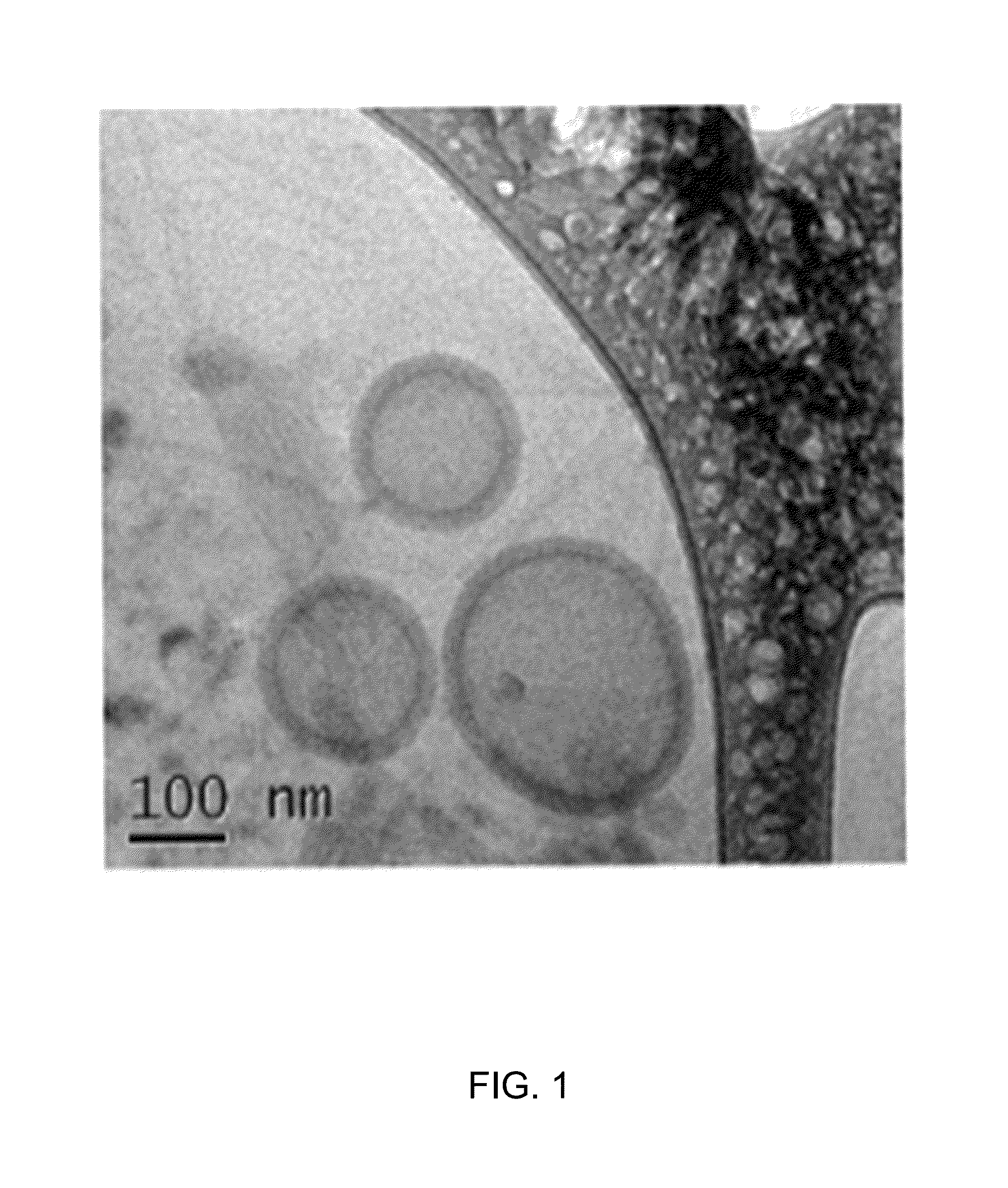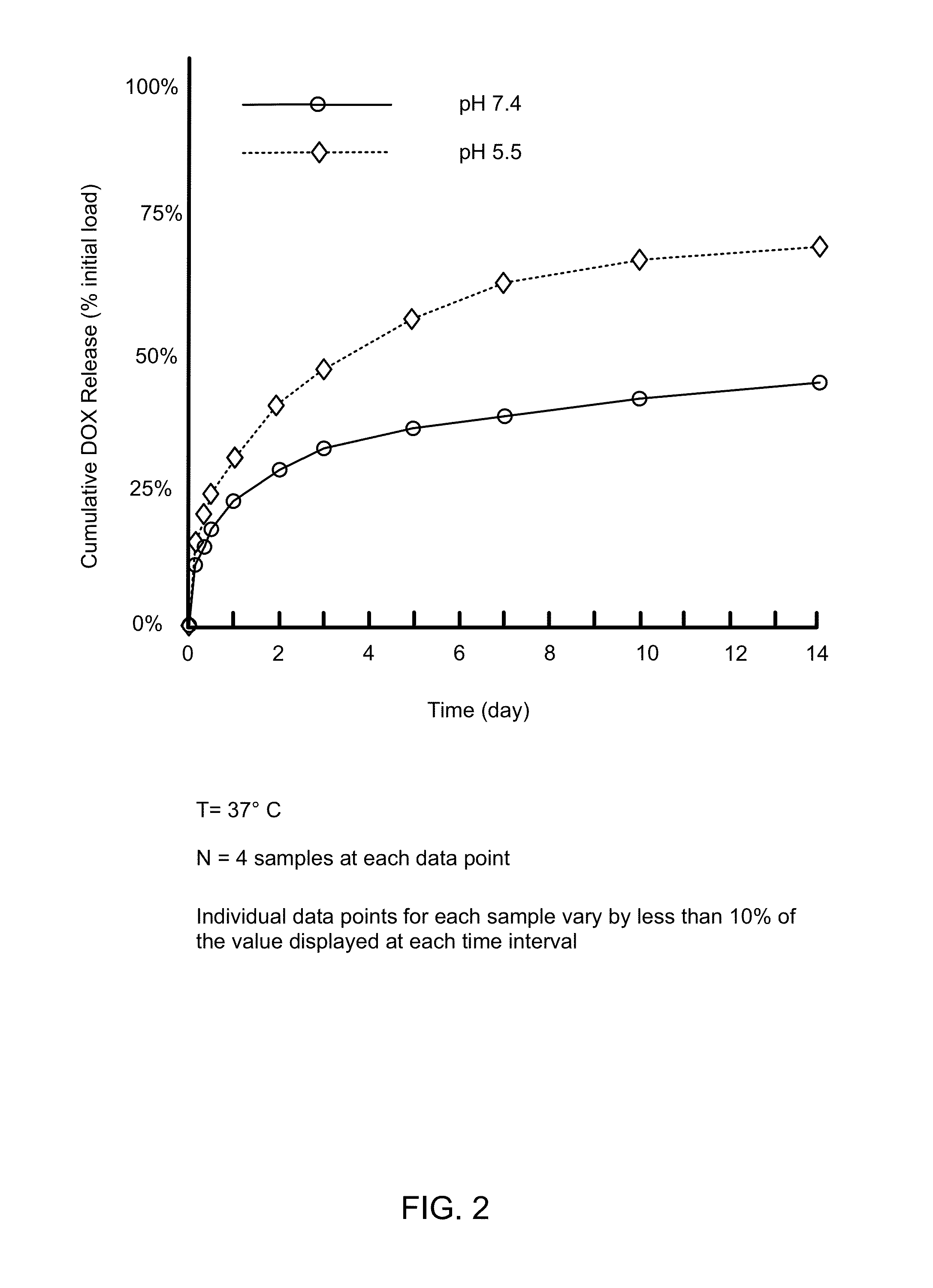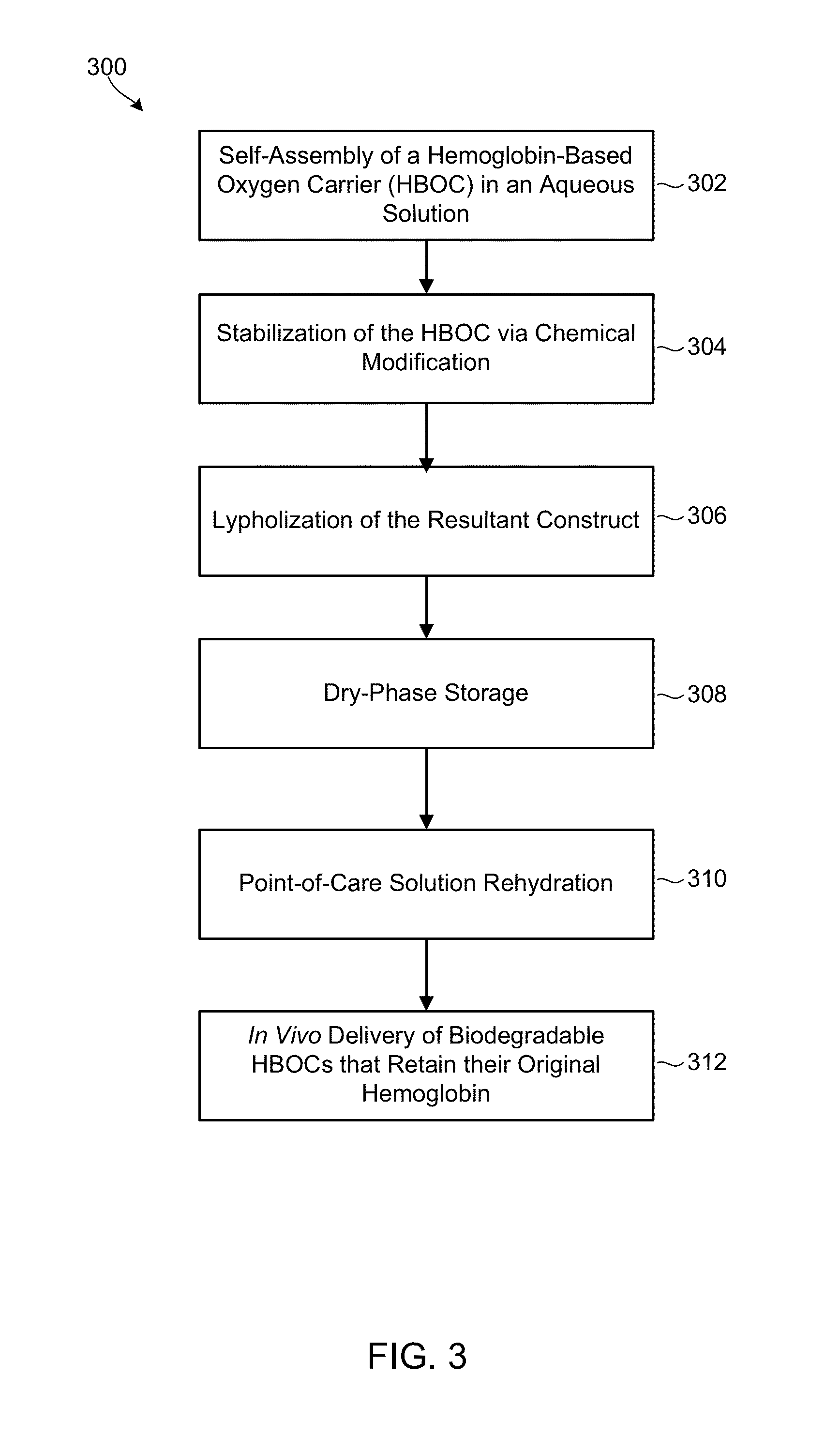Biodegradable nanoparticles as novel hemoglobin-based oxygen carriers and methods of using the same
a biodegradable nanoparticle and oxygen carrier technology, applied in the direction of drug compositions, peptide/protein ingredients, extracellular fluid disorder, etc., can solve the problems of shortening the number of red blood cell (rbc) units available for blood transfusion, donor human red blood cells, transfusions, etc., and unable to meet current demands
- Summary
- Abstract
- Description
- Claims
- Application Information
AI Technical Summary
Benefits of technology
Problems solved by technology
Method used
Image
Examples
example i
Methods and Materials to Construct Biodegradable PEH Dispersions with Varying Physicochemical Properties
[0234]Poly(ethyleneoxide)-block-poly(ε-caprolactone) (PEO-b-PCL) possessing a PEO block size of ˜1.5-4 kDa and with a PEO block fraction of ˜10-15% by weight may be utilized to form biodegradable PEH dispersions. Poly(ethyleneoxide)-block-poly(γ-methyl ε-caprolactone) (PEO-b-PMCL) copolymers of varying molecular weight, hydrophobic-to-hydrophilic block fraction, and resulting polymersome membrane-core thickness may be further incorporated to generate PEH constructs that are not only slowly biodegradable but also uniquely deformable, enabling passage through compromised capillary beds, via infra. PMCL, as a derivative of PCL, is a similarly fully bioresorbable polymer that degrades via non-enzymatic cleavage of its ester linkages. Polymersomes composed from PEO-b-PMCL are spontaneously formed at lower temperatures, in greater yields, and possess more deformable and viscoelastic mem...
example ii
Characterization of Physicochemical Properties of PEH Dispersions
[0239]To verify PEH generation, each Hb / polymer formulation may be characterized for particle size distribution using dynamic light scattering (DLS). The PEH structure and morphology may be directly visualized in their native physiological environments using cryogenic transmission electron microscopy (cryo-TEM). The viscosities of the various PEO-b-PCL and PEO-b-PMCL-based PEH dispersions may be measured using a microviscometer. Hb encapsulation %, defined as the weight ratio of hemoglobin in the resultant PEH suspension compared to that in the initial solution, is a significant parameter that determines the ultimate utility of that particular PEH formulation as a potential synthetic oxygen carrier.
[0240]Multiple PEO-b-PCL and PEO-b-PMCL-based PEH dispersions may be systematically generated, varying in initial polymer composition, polymer-to-Hb weight ratios, particle sizes and production strategies. Subsequent measure...
example iii
Characterization of the Oxygen-Carrying Properties of Biodegradable PEH Dispersions
[0241]The oxygen binding properties of PEO-b-PCL and PEO-b-PMCL-based PEH dispersions may be measured using established techniques. The equilibrium oxygen binding properties are thoroughly characterized as well as the diffusion kinetics of oxygen across polymersome membranes. With the aid of these measurements, oxygen permeabilities and oxygen-membrane diffusion coefficients for these various PEH dispersions may be determined. These very fundamental parameters have, hitherto, been uncharacterized for any synthetic oxygen carrier but are critical for the optimal design of a successful cellular HBOC. Nitric oxide (NO) binding profiles of various PEO-b-PCL and PEO-bPMCL-based PEH dispersions may be further studied.
[0242]A physiologically important function of the red blood cell membrane is its management of the transport of endogenous gaseous messenger-molecules such as NO. As described above, acellular ...
PUM
| Property | Measurement | Unit |
|---|---|---|
| weight fraction | aaaaa | aaaaa |
| weight fraction | aaaaa | aaaaa |
| weight fraction | aaaaa | aaaaa |
Abstract
Description
Claims
Application Information
 Login to View More
Login to View More - R&D
- Intellectual Property
- Life Sciences
- Materials
- Tech Scout
- Unparalleled Data Quality
- Higher Quality Content
- 60% Fewer Hallucinations
Browse by: Latest US Patents, China's latest patents, Technical Efficacy Thesaurus, Application Domain, Technology Topic, Popular Technical Reports.
© 2025 PatSnap. All rights reserved.Legal|Privacy policy|Modern Slavery Act Transparency Statement|Sitemap|About US| Contact US: help@patsnap.com



